Overview of Issues
Presentation by Erin McCuskey
A Resident’s Overview of Current Issues of Development in Ballarat East
What are some of the issues Ballarat East is facing with the current level of development in Ballarat East. I sought inspiration from our local paper Property section – here is what I found just yesterday, page 2 – which defines what our real estate agents think of telling potential residents in each area. Sebastopol – Lovely home with character; Ballarat – Great original features; Ballarat East – Three homes on one title…
 |
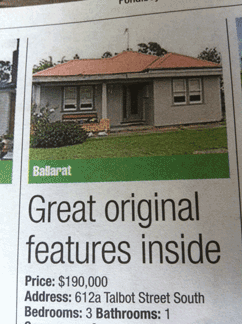 |
 |
And then who exactly is pushing over development in Ballarat East? “Developers take note” “Permit for 7 units (STCA)” or how about getting the keys to a house that doesn’t’ yet exist, and likely won’t because it will be a million units, not a house…
 |
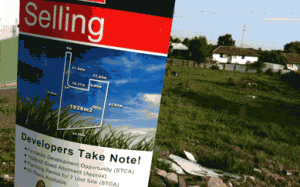 |
And the hilarious comment “lovely replica facades”, if you saw these units your first words would not contain any of those words…
 So what is Neighborhood Character?
So what is Neighborhood Character?
The State Government Working Party defined Neighbourhood Character as:
“… the qualitative interplay of built form, vegetation and topographic characteristics, in both the private and public domains that make one place different from another.”
Neighbourhood character and its protection is enshrined in ResCode, yet it loses out everytime to more specific rules of zoning in the State Planing Scheme – Zone Res 1 – which covers most if not all of our city and surrounds – basically say you can build anything anywhere – it’s hard to fight without a definition.
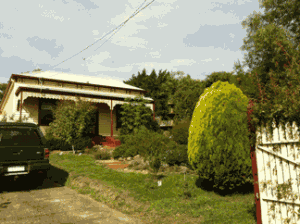 Neighbourhood Character is not to be confused with attractiveness. Council officers receive permit applications, and then conduct some research into the area and surrounds. Their notes are included in the report on the permit application as Neighbourhood Character. On one application for a recent development a council officer wrote of an area the area of Fussell Street between York and Wilson, a very green rural area, that the area had “little or no discernible character”. I know more than one resident who felt rightly offended by this description.
Neighbourhood Character is not to be confused with attractiveness. Council officers receive permit applications, and then conduct some research into the area and surrounds. Their notes are included in the report on the permit application as Neighbourhood Character. On one application for a recent development a council officer wrote of an area the area of Fussell Street between York and Wilson, a very green rural area, that the area had “little or no discernible character”. I know more than one resident who felt rightly offended by this description.
Every neighbourhood has a character, a look, a feel, a vibe that can be described in words and images, it is not about someone’s subjective idea of beauty. Diane Chester, and other residents, carried out a thorough character study of the same area defining features, areas, vegetation, materials, yards, set-backs etc. The evidence produced we believe won a denial of that particular permit at Council and at VCAT.
Developers claim that they can create developments that turn away from the street and create their own Neighbourhood Character, and both council and VCAT have previously approved this type of proposal. This practice is dangerous and creates ghettos where residents are excluded from their own community, excluded from council services (e.g. rubbish collection), fenced in if you like. Those developments are then used to reduce property sizes in the area, having a big impact on existing Neighbourhood Character.
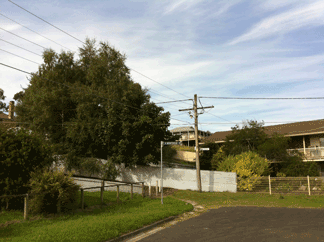 Developers claim that Neighbourhood Character is evolving and that their developments contribute to that evolution. Often the designs have been used before, or created even before the site has been identified. Is this truly supporting an evolving character of the area or a wallet evolving process using cookie cutter, one size fits all type of development? Either way it is not a positive contribution. Should we leave the evolution of neighbourhoods to developers, unchecked how will our neighbourhoods look in five year, ten years, twenty years?
Developers claim that Neighbourhood Character is evolving and that their developments contribute to that evolution. Often the designs have been used before, or created even before the site has been identified. Is this truly supporting an evolving character of the area or a wallet evolving process using cookie cutter, one size fits all type of development? Either way it is not a positive contribution. Should we leave the evolution of neighbourhoods to developers, unchecked how will our neighbourhoods look in five year, ten years, twenty years?
Geoffrey London the State Government Architect said “that good design contributes substantially to therapeutic outcomes.” He said elsewhere that good design is design that fits, design you couldn’t imagine fitting anywhere else, so how does that fit here? Why can’t we expect good design, good sustainable design?
So what is the character of Ballarat East – the history, the cottages, the sheds and vege gardens, the green belts and wildlife that we have lived with happily for years, and how does it fit with what we want to be when we grow up? And how do we begin to define that? Other councils have conducted extensive character studies to support a good process. specifically Banyule, Maroondah and Frankston. Also we found the City of Whitehorse has, so has Stonnington. Let us know if you find anymore.
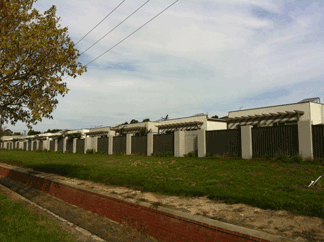 Over-development (& lack of infrastructure)
Over-development (& lack of infrastructure)
Recent articles in the mainstream media point to the devastating effects on communities that repetitive design, no backyards and lack of infrastructure are having. It seems the issues we face here are being faced in many areas…
- Sick Suburbs – The Age March 15th
- Living on the Fringe can make people sick – editorial The Age March 15th
- Good Planning Must Balance Rights – The Age March 16th
There is no Activity Centre Planned for Ballarat East – however the spend on development is not in keeping with this plan. Some residents are opposed to having activity centre in Ballarat East, some are in favour, Either way there is no balance between the amount of development and the lack of infrastructure. Either way have your say on the strategy suggested by the City of Ballarat. Submissions are due by March 26th. It’s all online so go for a surf…
The Ballarat Infill Study has recognised that some areas of Ballarat East is not suitable for high or even medium density development. This document cannot be used as fact at VCAT because it is not part of the Ballarat Planning Scheme,. However one Councillor quoted this study in a recent decision as his reason to vote for a medium density development. What education of our Councillors and council officers is needed to ensure they avail themselves of the studies we have already paid for, why are these documents being used more effectively in planning. Other documents referred to are the Ballarat Open Space Strategy, the Ballarat Residential Infill Study, Environmental Sustainability Strategy, the Koala Plan of Management, and there are more, all are available on the City of Ballarat website.
Over-development brings more light pollution, noise pollution, parking and traffic issues. What about the placement of Roads/Walking Paths/Our Waterways/Vegetation – we know that Friends of Sparrow Ground have had some great success in this area, however why is it not enshrined in our planning scheme, why do we feel we have to fight tooth and nail for the smallest concessions from developers on the very things that support the creation of communities, a belongingness and the environment we need for good health.
 Open Space (public & private)
Open Space (public & private)
Over-development leads us directly to open space – do not pass go do not collect $200, and they are completely connected.
There are two types of open space – private open space and public open space – here is an image of private open space – it’s the school/orphanage site – trees freshly cut down… Private open space is space tht surrounds a dwelling and is for teh use of those who live in that dwelling.
Current developments are reducing private open space to spaces enough to hang the washing and not much more, in fact often they don’t put in washing lines, they put in spaces for clothes dryers. Experts say it is these very small to no backyards and lack of community spaces that are contributing to the obesity crisis amongst our young, and the lack of connectedness in our communities.
Then there is public open space – places we can all use – Eureka Park, Canadian State forest, Pryor Park. When a permit is approved, a percentage of funds is paid to our council to contribute to public open space. Those funds are spent on public open space, however not often linked to where the development is. The councils opinion is that public open space needs to be places strategically, they do not have the funds or resources to maintain lots of small areas of public open space. However the result for residents and new residents in over-development sites is that public open space is quite a distance away. Contributing again to the issues of health for our community.
Overlays
Heritage, Vegetation, Environmental Significance that includes the Koala Management Plan etc. We have overlays that are not only to protect areas, but also to enhance them. With no enforcement from council enhancement is impossible to ensure. Ballarat council has rightly won awards for the Koala Management Plan – now we just want to see it used more effectively in planning permit negotiations.
This overview is the view of one resident who is happy to be corrected, very happy for comments and very hopeful that together we can create positive change for Ballarat East.